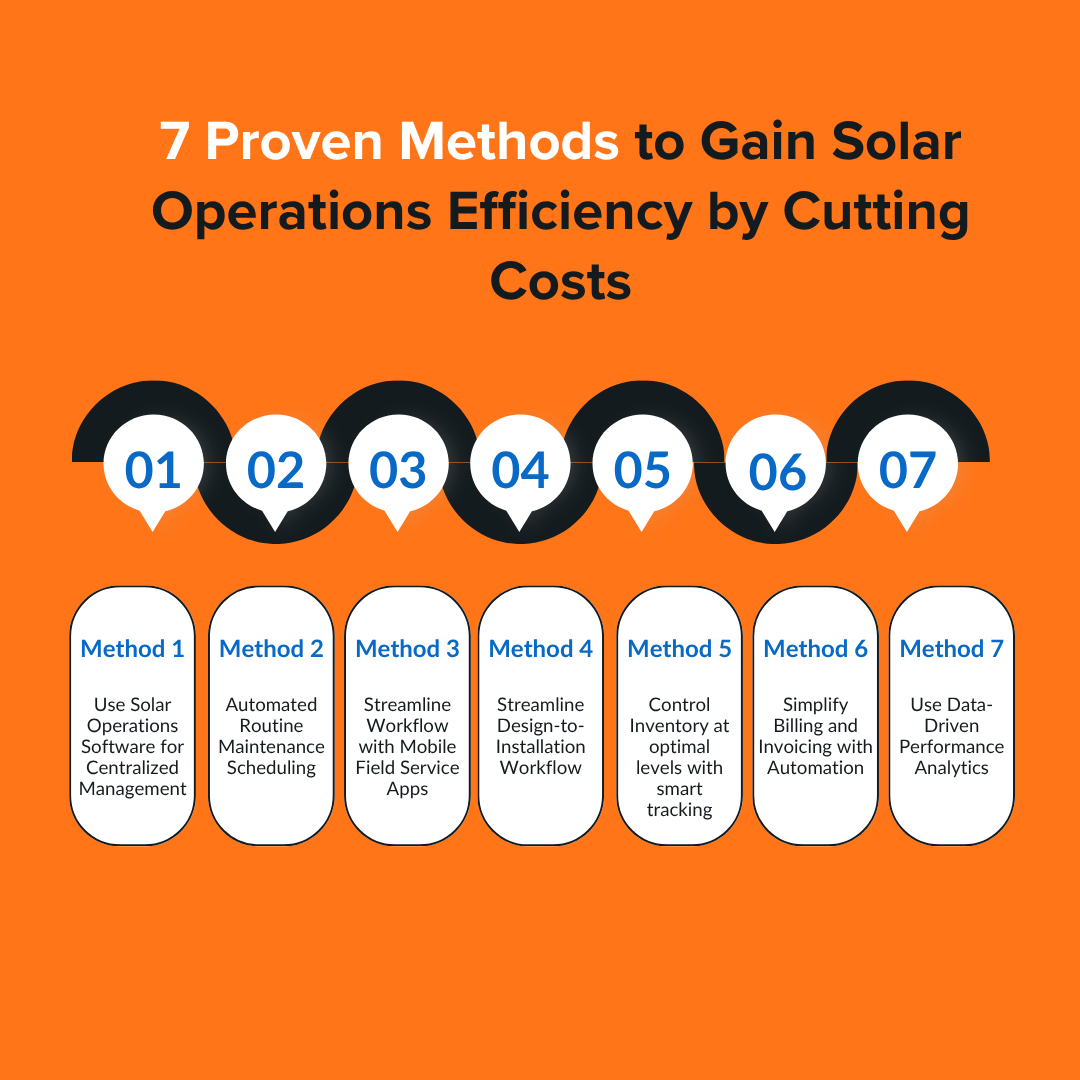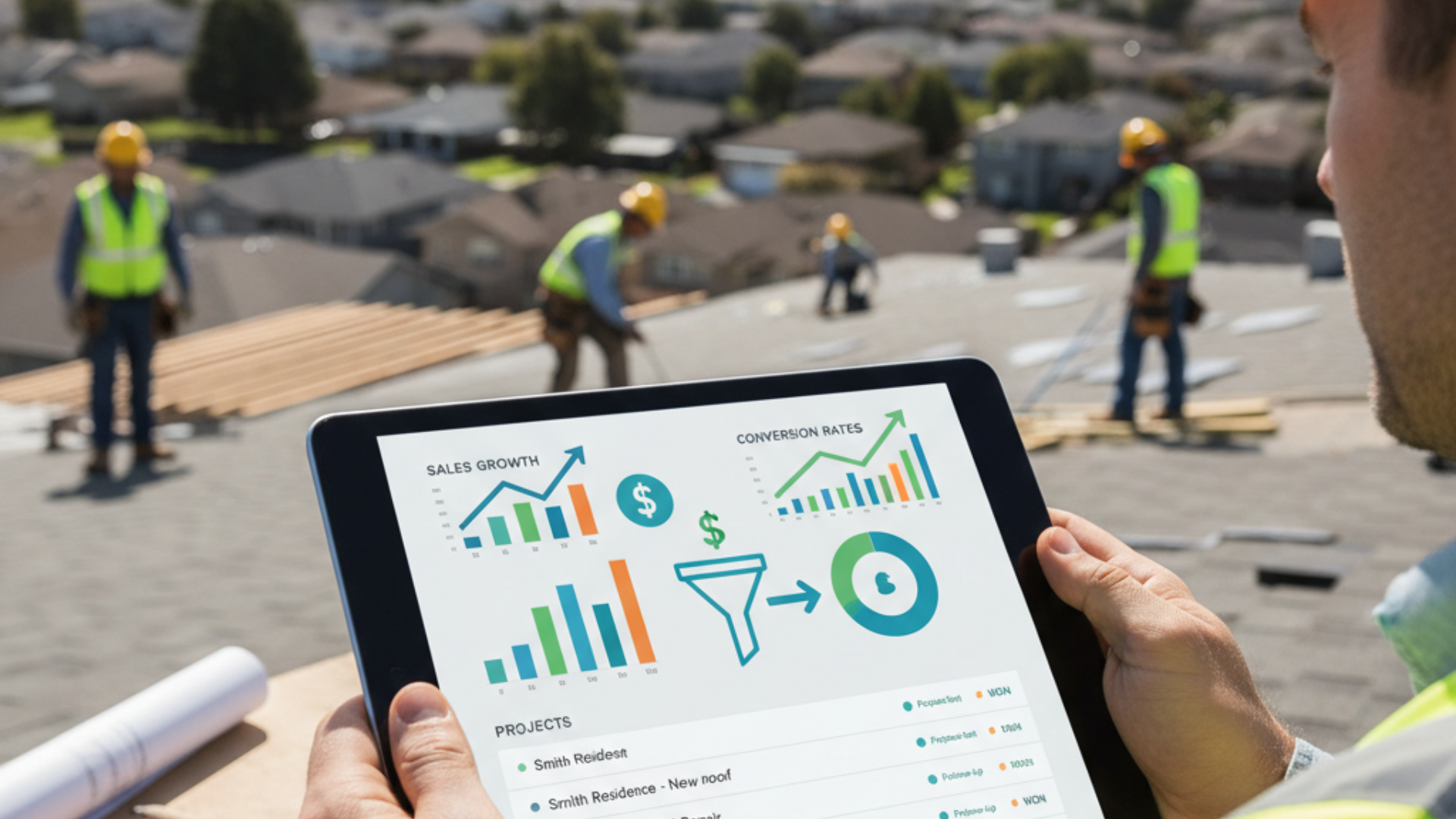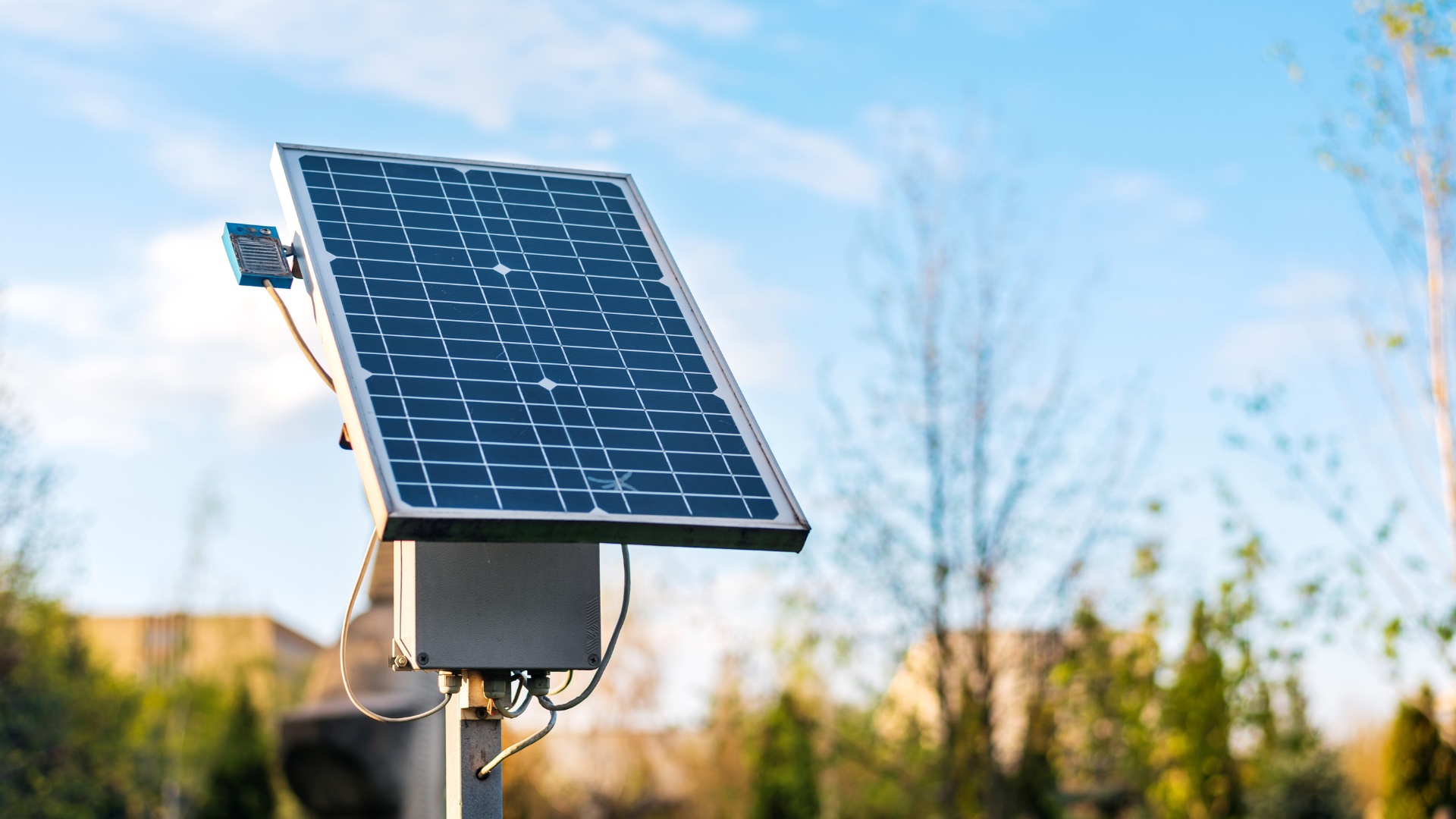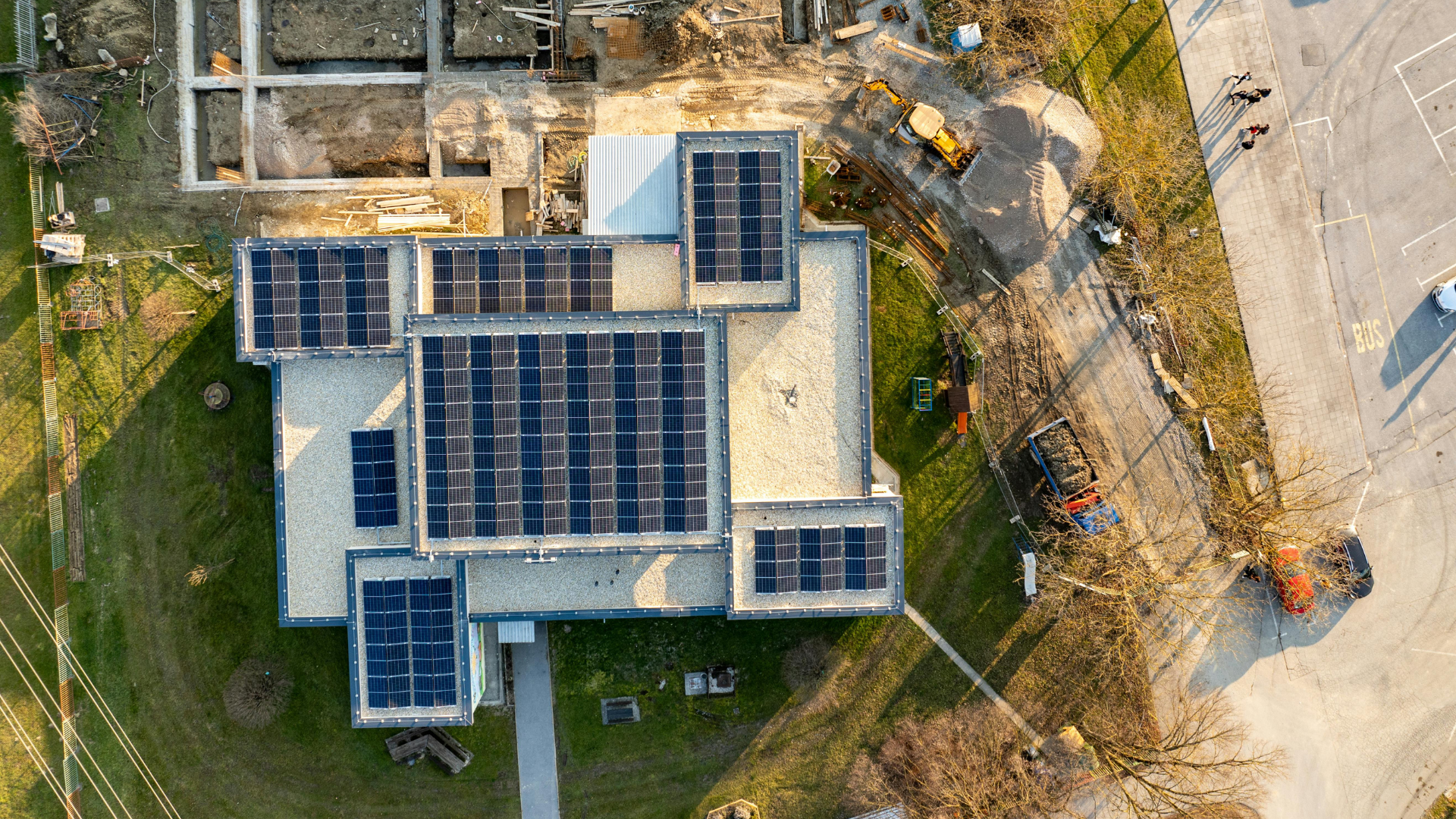September 23, 2025
Audio overview: Listen & Learn
The solar technology industry is booming fast, and solar panels are one of the most widely used sources of electricity in the US in 2025, serving more than 69% of all households.
The Solar Industry is growing and creating avenues for revenues, despite this, solar operations are losing revenues due to hidden operational costs that drain their profits.
The solution? Adopting smarter ways to streamline operations that reduce costs without sacrificing quality.
So, let us explore the 7 proven and practical methods that will help you cut out the solar operations costs and boost overall power output and system performance.
How to Cut Solar Operations Costs: 7 Proven Strategies That Work
Cutting down on solar operations costs is crucial to staying competitive and maximizing profits.
Let us explore the proven strategies that can streamline your business and reduce expenses, boosting efficiency and revenue gains.
Unlock the full potential of your solar projects with a powerful app that can optimize every step from design to installation of solar energy systems.
Key Takeaways
- The rise in demand for high solar panel efficiency requires skilled labor and controlled costs to meet customer expectations.
- Solar operations costs are increasing due to labor shortages, supply chain disruptions, regulatory tariffs, and poor inventory management.
- Cost control is crucial for solar companies to maintain profitable margins and remain competitive.
- Solar operations software is a powerful tool that automates tasks, optimizes workflows, and maximizes ROI for solar businesses.
What Are Solar Operations Costs?
Solar operations costs are associated with the expenses involved in running and maintaining the most efficient solar panel system performance for maximum energy output.
They include investments in essential components such as solar panels, solar arrays, inverters, mounting systems, and advanced monitoring technology that ensure and improve the efficiency of solar panels and solar cells.
Trends that are driving up Solar Operations Costs

1. Labor Shortages
- Skilled labor is essential for installing modern yet complex solar systems.
- Shortages of qualified workers, combined with a 43% rise in national labor costs, are putting significant strain on companies operating with thin profit margins.
2. Supply Chain Disruptions
- A surge in shipping fees and raw material costs has significantly increased operational expenses for manufacturers of polycrystalline, monocrystalline, and thin-film solar panels.
- New trade policies and tariffs on solar panel installations have made solar projects more expensive to execute.
Do you know: There is an annual increase of 3% in residential and 2% in commercial solar PV installation prices.
3. Regulatory pressures for today's solar panels
- The U.S. has raised tariffs on solar imports from South and East Asia, pushing installation costs up by as much as 135%.
- Residential solar permits can add up to 20% to total project costs for solar cell installation.
4. Growing Customer Service Expectations
- The solar industry is heating up with rapid growth, and even the solar panel coolers cannot chill the competition from solar companies.
- Paid ad campaigns, door-to-door canvassing efforts, needs for high-efficiency solar systems, and tech-powered tools for instant consumer response all contribute to rising operational costs, shrinking your profit margins.
5. Poor Inventory Management
- Overstocking materials leads to unused inventory gathering dust, and expenses rise from damaged, spoiled, and outdated inventories, such as PV cells and batteries that become obsolete.
- Understocked inventory results in last-minute scrambles, driving up capital costs and project delays.
Cost Control For Efficient Solar Panels: Why Does It Matter to Mid-Sized Entrepreneurs?
1. Operating Costs Pinch Profit Margins
Operation costs related to power rating can consume approximately 15% of your project budget if not properly optimized, reducing your profit margins or even pushing you into a loss.
2. Preparing for Business Growth and Scaling Operations
Cutting out unnecessary expenses and using data-driven insights to track spending and profit-generating areas leads to smarter investments that help your solar companies scale.
3. Response to Increased Competition in the Solar Market
Cost Control is the strategic shift that wins bids and saves dollars to win the race in the highly crowded solar service market. This is where innovation, combined with smart cost control, gets you victories.
4. Navigation to Compliance and Regulatory Requirements
Failure to comply with solar installation regulations can lead to hefty fines, while effective compliance helps control these extra penalties, draining your revenue reserves.
Check Out: Can Solar Software Double Your Sales During a Downturn?
What Is Solar Operations Software and How Does It Help Save Costs?
Solar operations software streamlines and optimizes system performance to reduce costs. It helps manage projects, track solar radiation data, and automate operational tasks that positively affect efficiency and performance.
Solar operations software like Sunbase can be a key driver of real-world performance by cutting costs and maximizing your return on investment.
7 Proven Methods to Gain Solar Operations Efficiency

To boost profits, you don't need to sacrifice customer trust or compromise on efficiency; doing so only harms your reputation in the long run.
These 7 proven strategies will help you streamline your solar operations while maintaining top-quality service that builds trust and drives sales.
Solar Performance + Operational Efficiency = Profitability
Method 1: Use Solar Operations Software for Centralized Management
a. Unified Scheduling and Dispatch:
- Collects relevant factors from your office to assess if a prospect's location is suitable for solar.
- Auto-assigns technicians for solar panel installations based on project priority and deadlines to eliminate costly delays and maximise customer satisfaction.
- Weather disruptions are captured to minimize labor idle time and ensure every solar installer has the right tools to maximize solar panel efficiency gains.
b. Automated Reporting and Alerts:
- Real-time performance monitoring detects issues such as short-circuit faults, panel design faults, or temperature-related issues like increased heat production that affect energy output, so that there is minimal downtime.
- GPS live tracking and territory planning optimize technician routes, cutting fuel costs.
- Improved customer service leads to increased referrals and repeat business opportunities.
Smart Cost Savings: Companies can reduce administrative overhead by up to 20-30%, even in higher temperatures, saving thousands annually on manual scheduling and reporting tasks.
Method 2: Automated Routine Maintenance Scheduling
a. AI-powered Intelligence
- Tools that analyze the roof angles, shading patterns, and landscape to create 3D models of the proposed solar panels before installation, handling the complex mathematics.
- AI tools create the most efficient solar panel designs within minutes, aligned to energy goals, location, and space available to customize every design that fits the homeowner's needs.
b. Efficient Resource Allocation
- Data-driven insights allocate the resources just right to balance workload and control costs.
- Detailed site-specific dashboards provide an eagle's view to the project managers to tactfully implement decisions on resource allocation, optimizing its usage that controls cost overrun.
Smart Cost Savings: Predictive maintenance reduces costs related to maintenance by 40%.
Method 3: Streamline Workflow with Mobile Field Service Apps
a. Real-time updates
- Immediate communication reduces costly delays in responding to maintenance needs, helping maintain solar energy efficiency.
- The centralized platform on a mobile app with real-time updates helps technicians and team members stay connected on the same lines. This, in turn, helps in preventing expensive errors that can lead to performance loss or system inefficiencies.
Smart Cost Savings: Solar Smart grids' real-time monitoring brought a 15% reduction in energy output and consumption during peak hours.
b. Digital proposals and approvals
- Quick creation of visually impressive, pre-defined templates that can be customized to speed up the process of setting up solar panels.
- E-signature functionality to accelerate the job closing deals that bring dollars faster into your accounts.
Smart Cost Savings: Digital proposals can shorten the sales cycle and boost sales by up to 70% without the need to hire additional staff.
Method 4: Streamline Design-to-Installation Workflow
a. Automation of Design and Pricing for Accuracy for maximum solar irradiance
- Efficient PV designs not only maximize energy production but also promise long-term reliability and durability of the solar panel installations.
- Solar design software can deliver accurate 3D models by precisely calculating solar cell designs, considering factors like tilt angles, shading, roof orientation, and temperature coefficient for optimized performance.
- Designing higher efficiency panels ensures that you can meet the unique needs and specifications of each project.
b. Streamline Workflows Through Instant Payment Processing
- Streamline the workflow by monitoring each stage to maintain a competitive edge in the solar industry by using a centralized platform for design, procurement, and installation.
- Automated scheduling and real-time progress tracking reduce delays and errors, ensuring the timely delivery of solar system operations.
Smart Cost Savings: Optimized workflow lowers average cost per job by 20%.
Method 5: Control Inventory at optimal levels with Smart Tracking
a. Just-in-Time Inventory
- A cloud-based tool provides real-time inventory visibility for all solar panel installation needs to ensure a better energy efficiency rating.
- Automated alerts flag overstocking or shortages on components that use more energy, helping to prevent efficiency loss.
b. AI-based data for accurate prediction
- Forecast material needs based on your project pipeline to stay ahead of the demand and supply curve.
- Real-time insights and analytical dashboards maintain optimal stock levels to reduce shipping delays and costly logistics and forecast better inventory needs, preventing overstocking or unders stocking.
Smart Cost Savings: Companies that use AI-intelligent inventory management software have a 10-20% reduction in inventory costs.
Method 6: Simplify Billing and Invoicing with Automation
1. Reduced Manual Errors
- Automating billing and payment processing reduces manual effort, accelerating the revenue cycle by lowering administrative costs and streamlining cash flow.
- Automated invoicing saves time and monitors expenses in real-time for better budget management.
- Instant payment processing by integration to accounting tools makes revenues fall faster into your financial reserves account.
2. Integration with Accounting Tools
- Detailed visibility into ledger books tracks all credits and debits to gain insights into the financial health of your company.
- Consolidation of the financial data for comprehensive reporting on business performance.
Smart Cost Savings: 65% business automates invoice processing, which has improved overall efficiency and contributed to the total energy output.
Method 7: Use Data-Driven Performance Analytics
a. Key Performance Tracking and Remote Monitoring
- Remote diagnostics detect energy output and solar irradiance in real-time, sending alerts for dusty panels, underperforming solar efficiency, and light-induced degradation.
- These automated alerts and notifications on red flags on solar panel efficiency prevent the escalation of costly repairs.
b. Smart Dashboards Reduce Costs in Solar Panel Installation
- Auto-updates from multiple data sources, allowing users to customize views and alerts for real-time decision-making.
- It delivers instant data analysis through charts, graphs, heat maps, and pie charts, making it easy to identify trends, spot outliers, and understand key metric relationships for informed action.
Smart Cost Savings: Automated problem detection from smart dashboards drops panel energy output failures by
15% and boosts efficient panel installations.
Check out: 7 Ways to Cut Costs in Solar Operations Without Compromising Quality
Key Approaches to Cut Down Solar Costs: Invest Wisely to Maximize Savings
1. Workforce Training and Cross-Skilling
- Skill enhancement of the workforce improves job performance.
- Cross-skilling involves teaching new and diverse skills to employees that broaden their expertise horizons, reducing the need for additional hires.
Implementation Tips:
- Use targeted training programs and competency mapping to evaluate and improve employee skills.
- Leverage AI-powered platforms to track performance and boost workforce efficiency.
2. Strategic Vendor Management
- Secure the best prices and reliable materials without compromising quality.
- Build strong supplier relationships to streamline the procurement process.
Implementation Tips:
- Defining the project needs to evaluate potential vendors based on experience and expertise.
- Centralized vendor management system to streamline communication and boost performance.
3. Leveraging Government Incentives and Rebates
- Government projects offer financial incentives that lower upfront costs.
- It is important to be informed about these incentives, as they are essential for improving financial health and boosting profits.
Implementation Tips:
- Assess eligibility criteria for various solar panel efficiency programs to maximize benefits.
- Consult reputable solar manufacturers to optimize system designs that meet eligibility requirements.
Check Out: Solar Project Management Software: Tools, Mistakes, and ROI Case Studies
Cost Control Power With Sunbase Software
Sunbase helps you maximize efficiency while minimizing operational costs. Wondering how? Let's look closer into the integrated tools that solve the rising cost dilemma.

1. Solar CRM:
Control costs by automating workflow with smart proposal generation, seamless financing tools, and real-time sales tracking that closes deals faster and boosts revenues.
2. Solar Design:
A powerful tool that designs smarter PV modules for simple to complex solar installations, boosting efficiency and delivering precise energy simulations to ensure optimal performance and cost savings.
3. Solar Proposal:
Streamline proposal creation with customizable and branded proposals that include e-signature approval for instant sales closure.
4. Solar Project Management:
Gain complete project visibility to manage every detail of the solar panel from estimation to installation and real-time communication to keep every team crew member connected and collaborating.
5. Solar Inventory Management:
Keep real-time visibility on all solar components and materials, prevent overstocking or shortages, and reduce waste for smarter inventory management.
6. Solar Financial Management:
Automate budgeting, invoicing, and ROI tracking with integrated financial tools that help monitor costs, forecast revenue, and maximize profits.
7. Solar Door-To-Door Canvassing:
Organize and track your sales teams’ canvassing efforts, monitor lead engagement, and convert prospects into paying customers efficiently.
8. Solar Dashboard Reporting:
Monitor project progress visually with interactive dashboards that highlight timelines, team responsibilities, and any bottlenecks in real-time.
9. Solar HR Management:
Manage employee records, roles, and performance evaluations in one centralized platform to keep your team efficient and aligned.
Wrapping Up
Reducing solar operations costs is no longer optional; it’s essential for staying competitive and maximizing profits in a rapidly growing solar industry.
Implementing these methods not only improves profitability but also enhances customer satisfaction, ensures regulatory compliance, and positions your company for sustainable growth.
Additionally, using tools like Sunbase turns up your solar panel performance, delivering higher energy output with more efficient panels while keeping your budget cooler.
Remember: Smart, efficient solar operations are the key to long-term success. Start optimizing today.
About Sunbase
Sunbase Software Solutions helps you streamline workflows, boost solar cell efficiency, and save smarter at every step. It enables solar businesses to optimize every stage, from lead capture to installation, ensuring higher energy output and cost savings.
Book a Sunbase Demo now to see how it can transform your solar operations and maximize profitability.
FAQs
1. What are the approximate cost savings I can expect with solar operations software?
Solar operations software can deliver 15% to 40% cost savings by automating tasks and optimising operations to improve project workflows.
2. How quickly can I implement Sunbase in my operations?
Sunbase can be implemented within the organisation within 2 weeks, and our onboarding team provides full support for smooth operations and faster implementation, helping you understand your system's power rating.
3. Is Sunbase suitable for mid-sized solar companies?
Yes, it is designed to scale your business and offers features suitable for mid-sized firms to improve efficiency.
I agree to receive marketing messaging from Sunbase at the phone number provided above. I understand data rates will apply, and can reply STOP to OPT OUT.







